Introduction:
Let’s be real—owning a pool is like adopting a high-maintenance pet that never learns to fetch. It looks great at parties, but behind the scenes, it’s a never-ending cycle of cleaning, fixing, and questioning your life choices. And at the heart of it all? Those sneaky little pool cleaner parts that seem to have a personal vendetta against your wallet.
You might think, “Eh, if the cleaner’s moving, it’s fine.” Wrong. That’s the same logic as ignoring your car’s “check engine” light until it starts belching smoke. Pool cleaners are workhorses, but their parts wear out faster than your patience at a DMV. Worn brushes? Your pool’s dirtier than a teenager’s laundry pile. Cracked hoses? Say hello to weak suction and a half-cleaned mess. And don’t even get me started on aftermarket parts—some are legit, others are about as reliable as a weather forecast.
This isn’t just some boring manual. Consider it your cheat sheet to outsmarting the chaos—knowing which parts to replace, when to DIY vs. call in the pros, and how to spot scams before they drain your bank account. Because nothing ruins a summer faster than a broken pool cleaner… except maybe realizing you could’ve fixed it yourself in 10 minutes. Let’s dive in.
Why Pool Cleaner Parts Matter More Than You Think
You ever notice how your pool cleaner starts acting up right when you’ve got people coming over? Like it’s got a sixth sense for bad timing? That’s usually not the cleaner itself giving up—it’s one of those sneaky little parts inside deciding to retire without notice. Pool cleaner parts are the unsung heroes of your backyard oasis, and ignoring them is like pretending your car doesn’t need oil changes just because it’s still moving.
Most folks treat their pool cleaners like magic boxes—you drop ‘em in the water, they do their thing, and you forget about ‘em until something goes wrong. Big mistake. These things aren’t appliances; they’re more like cars. You wouldn’t drive 50,000 miles without checking the tires or changing the oil, right? Same deal with pool cleaners. Those brushes, hoses, and filters take a beating every single day, and if you don’t keep an eye on them, you’re just waiting for a breakdown.
Here’s the kicker: a lot of pool problems people blame on “bad water chemistry” or “the pump acting up” actually start with worn-out cleaner parts. If your cleaner’s brushes are shot, it’s not picking up debris properly—so now you’ve got leaves rotting at the bottom, messing with your pH. If the hoses are cracked, suction drops, and suddenly your pump’s working overtime like it’s trying to win Employee of the Month. You can throw all the chemicals you want into the water, but if your cleaner’s parts are on their last leg, you’re just putting a band-aid on a broken leg.
And let’s talk about the “if it ain’t broke, don’t fix it” crowd. Sure, that mentality works for some things (like not updating your phone until it literally won’t turn on), but pool cleaners? Nah. By the time yours is making that sad grinding noise or leaving dirt trails like a snail, the damage is already done. You’re not just replacing a $20 brush anymore—you might be looking at a fried motor because the worn-out part let debris jam up the works.
Ever seen a pool cleaner try to move with bald tires? It’s like watching a drunk guy ice skate. Spins in circles, misses spots, and generally does everything except its actual job. But here’s what most people don’t realize: those tires aren’t just for looks. When they’re worn smooth, your cleaner can’t grip the pool floor, which means it’s not scrbbing algae off the walls either. Next thing you know, you’ve got a green tint to your water that no amount of shock will fix.
Hoses are another silent killer. They start with tiny cracks—barely noticeable—but give ‘em a few months, and suddenly you’ve got leaks killing your suction. And guess what? Your pump doesn’t just shrug and say “no big deal.” It strains harder, heats up, and before long, you’re not just buying a new hose; you’re shopping for a whole new pump system.
Filters are where things get really misunderstood. People treat ‘em like coffee filters—use ‘em until they’re disgusting, then maybe think about replacing them. But a clogged filter doesn’t just mean dirtier water; it means your cleaner’s working twice as hard to move water through the system. That’s like trying to breathe through a straw while running a marathon. Eventually, something’s gonna give.
Here’s the brutal truth: cheaping out on parts costs more in the long run. That $15 no-name brush might seem like a steal, but if it falls apart in two months (taking your cleaner’s gears with it), was it really a bargain? OEM parts might hurt your wallet upfront, but they’re like buying the good tires—they last, they fit right, and they won’t leave you stranded.
Maintenance isn’t rocket science, either. Five minutes of checking parts every couple weeks saves you hundreds in repairs. Look for:- Brushes that aren’t splayed out like a bad hair day- Tires with actual tread (bald = bad)- Hoses without cracks or weird bulges- Filters that aren’t holding last season’s leaves hostage
Quick Part Lifespan Cheat Sheet:| Part | Avg. Lifespan | “I’m Dying” Clues ||—————-|————–|———————————|| Brushes | 6-12 months | Bristles bent like overcooked spaghetti || Tires/Tracks | 1-2 seasons | Slipping more than a politician’s promise || Hoses | 2-3 years | Cracks you can see from space || Filters | 3-6 months | Water flow slower than DMV lines |
The real pro move? Keep spare parts on hand. Nothing worse than realizing you need a new brush right before a pool party and finding out the store’s closed. A backup set of the usual suspects (brushes, belts, maybe a hose) in your garage is like an insurance policy against pool panic.
At the end of the day, your pool cleaner’s only as good as its worst part. Treat ‘em right, and they’ll return the favor with crystal-clear water. Ignore ‘em, and well… enjoy those surprise repair bills. Your choice.
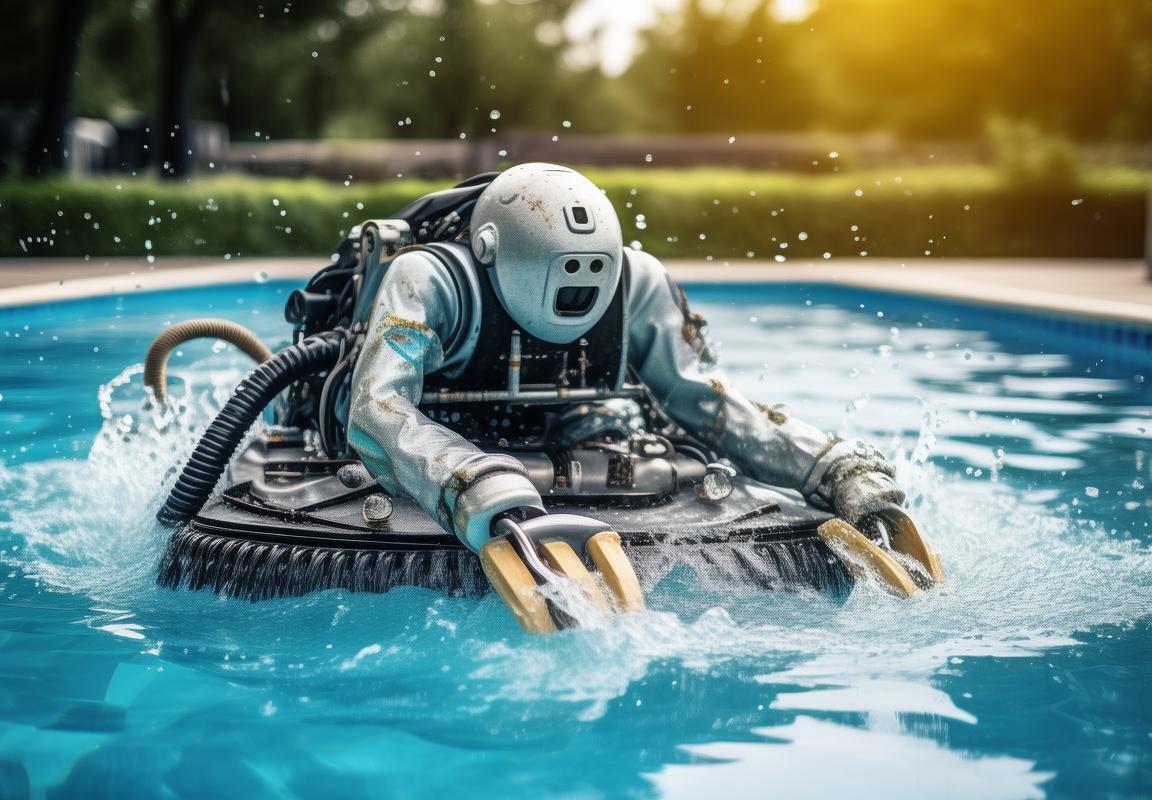
The Usual Suspects: Most Replaced Pool Cleaner Parts
“Why Pool Cleaner Parts Matter More Than You Think”
You wouldn’t expect your car to run forever without an oil change, so why treat your pool cleaner like some kind of magical, maintenance-free robot? The truth is, those little parts inside your cleaner are the difference between a sparkling oasis and a swampy nightmare. Ignore them, and you’re basically throwing money into the deep end.
Let’s start with the biggest misconception: “If it’s moving, it’s fine.” Wrong. Just because your cleaner is still trudging along doesn’t mean it’s working efficiently. A worn-out brush might as well be a toothbrush with three bristles—sure, it’s technically brushing, but good luck getting anything clean. Same goes for cracked hoses or bald tires. You’ll burn more energy, waste more chemicals, and still end up with a pool that looks like it’s been abandoned since the ‘90s.
Then there’s the “cheap parts are fine” crowd. Listen, I get it—nobody wants to drop $50 on a tiny rubber belt when Amazon has a knockoff for $8. But here’s the thing: that bargain-bin part will fail faster than a New Year’s resolution. And when it does, it might take other components down with it. A busted belt can fry your motor. A flimsy hose fitting can leak and mess with your pump’s suction. Suddenly, that $8 “deal” turns into a $300 repair.
The real kicker? Most pool problems start with neglected cleaner parts. Cloudy water? Probably a clogged filter. Uneven cleaning? Worn-out brushes or tires. Random shutdowns? Overheating from a struggling motor, thanks to a bad bearing or seized-up wheel. You can dump all the chlorine in the world into your pool, but if your cleaner’s parts are shot, you’re just polishing a turd.
Here’s the good news: a little maintenance goes a long way. Check your parts regularly, replace them before they fully die, and you’ll avoid those “why is my pool green again?!” meltdowns. And if you think replacing parts is a hassle, try replacing the whole cleaner because you ignored them.
| Part Neglect Consequences | What Happens | How to Avoid It |
|---|---|---|
| Worn Brushes | Poor debris pickup, algae buildup | Inspect every 3 months, replace when bristles look sad |
| Cracked Hoses | Loss of suction, pump strain | Check for leaks, store coiled (not twisted) |
| Bald Tires/Tracks | Spinning in circles, missed spots | Clean debris, replace if slipping |
| Clogged Filters | Weak suction, cloudy water | Rinse monthly, replace when water flow drops |
Bottom line: Your pool cleaner is only as good as its worst part. Treat ‘em right, and they’ll return the favor with a pool so clean you could eat off it (not that you should). Ignore ‘em, and well… enjoy your pond.
“The Usual Suspects: Most Replaced Pool Cleaner Parts”
If pool cleaners had a “most wanted” list, these parts would be the repeat offenders. They’re the ones that fail first, cause the most drama, and—if you’re smart—you’ll keep spares of in your garage. Because when they go down, your pool’s cleanliness goes with ‘em.
Tires/Tracks – These bad boys wear out faster than cheap flip-flops at a water park. They’re the reason your cleaner either glides like a dream or spins in circles like a dog chasing its tail. Bald spots, cracks, or missing tread? That’s your sign. And if you’ve got a cleaner that’s suddenly doing donuts instead of cleaning, congrats—you’ve got a tire issue.
Brushes – The unsung heroes of debris pickup. When they’re fresh, they scrub like a toothbrush after a coffee binge. When they’re worn? Might as well be sweeping with a bald mop. If your pool’s floor starts looking gritty even after a cleaning cycle, your brushes have officially given up.
Hoses – The lifeline of suction-side cleaners. Cracked, kinked, or leaking hoses are like trying to drink a milkshake through a broken straw—frustrating and ineffective. And if you hear weird gurgling noises or notice weak suction, your hose is probably plotting against you.
Filters – The pool’s kidneys. When they’re clogged, your cleaner’s performance drops faster than a lead balloon. If your water’s cloudy even after running the cleaner, your filter is screaming for help.
Belts & Gears – The behind-the-scenes workhorses. A snapped belt means your cleaner’s dead in the water (literally). Grinding noises? Probably a gear on its last leg.
| Part | Lifespan | Failure Signs | Quick Fix? |
|---|---|---|---|
| Tires/Tracks | 1-2 seasons | Slipping, erratic movement | Replace if bald or cracked |
| Brushes | 6-12 months | Straggly bristles, poor cleaning | Swap ‘em out |
| Hoses | 2-3 years | Cracks, leaks, weak suction | Patch small leaks, replace big ones |
| Filters | 3-6 months | Cloudy water, low suction | Rinse or replace |
| Belts/Gears | 1-3 years | Grinding noises, no movement | Replace ASAP |
Pro tip: Don’t wait for total failure. If a part looks iffy, swap it before it ruins your pool day. Because nothing’s worse than realizing your cleaner’s out of commission right before a BBQ. Keep spares, check ‘em often, and your pool will thank you.
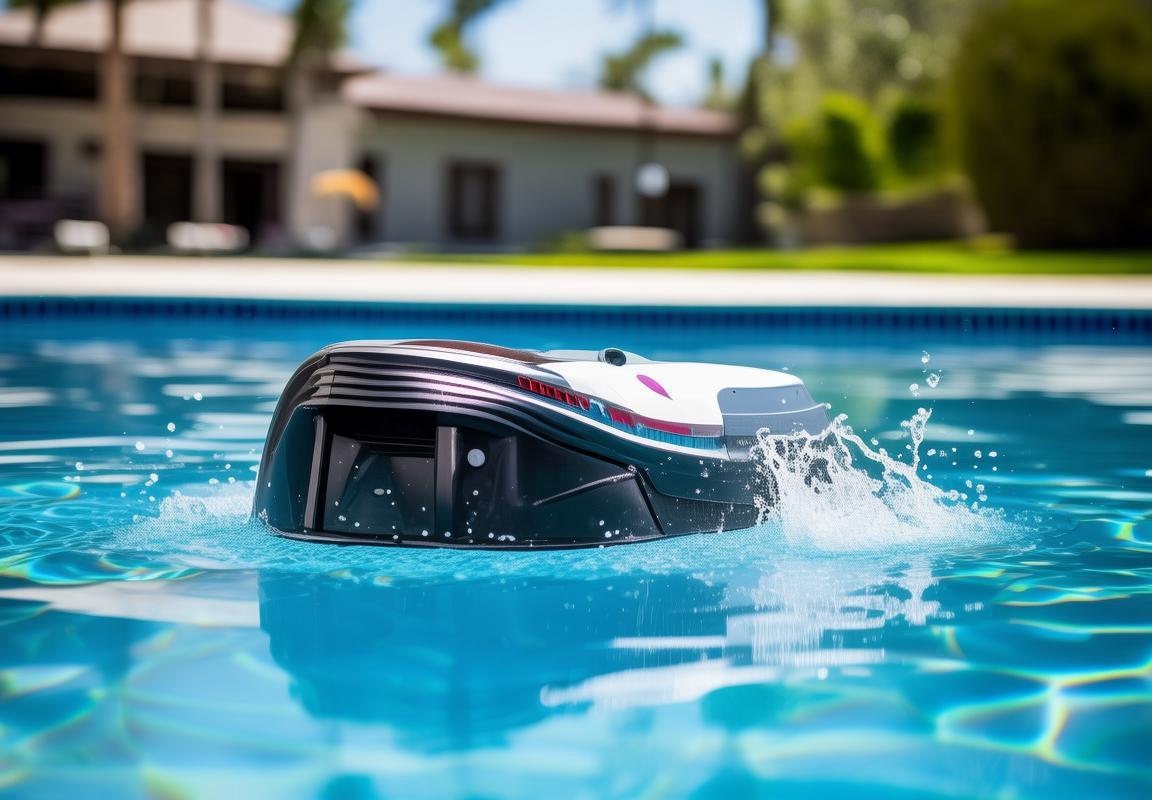
DIY or Cry? When to Tinker vs. Call the Pros
“Why Pool Cleaner Parts Matter More Than You Think”
You wouldn’t expect your car to run forever without an oil change, right? Well, your pool cleaner isn’t any different. Those little parts inside it? They’re the unsung heroes keeping your water crystal clear while you sip margaritas on a floatie. But here’s the kicker—most people treat their pool cleaners like magic boxes that never break. Newsflash: They do. And when they do, it’s usually because some tiny, replaceable part gave up the ghost.
Let’s talk about the biggest misconception—that as long as the cleaner is moving, everything’s fine. Wrong. A pool cleaner limping along with worn-out brushes or a cracked hose is like a car running on bald tires. Sure, it’s moving, but it’s not doing its job well, and it’s one pothole away from disaster. You might not notice right away, but your pool will. Debris starts piling up in weird spots, the water gets a little murky, and suddenly, you’re not just maintaining a pool—you’re running a swamp.
Then there’s the whole “cheap parts” trap. Yeah, that $5 generic brush might save you a few bucks now, but if it disintegrates in two months (and trust me, it will), you’ll be buying replacements way more often than if you’d just sprung for the good stuff. It’s like buying dollar-store flip-flops—they’ll last until the first beach trip, then it’s barefoot on hot pavement.
Here’s the real deal: Pool cleaner parts wear out. Some faster than others. And if you ignore them, you’re not just risking a dirty pool—you’re shortening the life of the whole machine. A cleaner with bad bearings or a dying motor doesn’t just stop cleaning; it starts eating itself alive. And that’s when you’re staring down a $500 repair bill instead of a $20 part swap.
So, what’s the smart play? Know your parts. Check them regularly. And for the love of chlorine, don’t wait until your cleaner sounds like a dying lawnmower before you do something about it.
“The Usual Suspects: Most Replaced Pool Cleaner Parts”
If your pool cleaner had a “most wanted” list, these parts would be the repeat offenders. They’re the ones that wear out, break, or just straight-up quit faster than a teenager’s summer job motivation.
Tires/TracksThese little guys take a beating. They’re rolling over rough surfaces, grinding against pool walls, and dealing with everything from stray leaves to tiny pebbles. And just like your car tires, they don’t last forever. When they start balding, your cleaner loses traction—meaning it might spin in circles, miss spots, or just give up halfway through the job. If your cleaner’s moving like it’s drunk, check the tires first.
BrushesThink of these as the toothbrushes of your pool cleaner. Over time, the bristles wear down, get tangled with hair and debris, and eventually stop scrubbing effectively. A bad brush means your cleaner’s just pushing dirt around instead of actually cleaning. And if you wait too long to replace them? Congrats, you’ve got a glorified Roomba that’s better at spreading algae than removing it.
HosesCracks, kinks, leaks—hoses are the drama queens of pool cleaner parts. They’ll look fine one day, then suddenly spring a leak that kills suction. And if your cleaner’s not getting enough water flow, it’s basically just taking a lazy stroll around the pool without doing any real work.
FiltersThese are the unsung heroes—until they’re clogged. A dirty filter means weaker suction, less efficient cleaning, and eventually, a pool that looks like it’s been abandoned for a month. The worst part? Most people forget about them until the water turns cloudy.
| Part | Lifespan | Warning Signs | Fix or Replace? |
|---|---|---|---|
| Tires/Tracks | 1-2 seasons | Slipping, uneven movement | Replace |
| Brushes | 6-12 months | Worn bristles, debris stuck in them | Replace |
| Hoses | 2-3 years | Cracks, leaks, loss of suction | Replace if damaged |
| Filters | 3-6 months | Reduced water flow, cloudy pool | Clean or replace |
The bottom line? These parts are consumables. They will wear out. The trick is catching them before they take the whole cleaner down with them.
“DIY or Cry? When to Tinker vs. Call the Pros”
There’s a fine line between being a handy pool owner and turning a simple fix into a full-blown disaster. Some parts are easy enough to swap out yourself—others? Well, let’s just say you don’t want to learn the hard way.
DIY-Friendly Fixes– Swapping Brushes: If you can handle a screwdriver, you can handle this. Most brushes pop right out, and new ones slide in just as easy.- Replacing Hoses: As long as you’re not forcing anything, this is a no-brainer. Just make sure the connections are tight so you don’t end up with a fountain instead of a cleaner.- Cleaning Filters: If you can rinse out a coffee filter, you can handle this. Just don’t blast them with a pressure washer—gentle is the way to go.
“Maybe Call a Pro” Situations– Motor Issues: If your cleaner sounds like a blender full of rocks, stop. Motors aren’t usually user-serviceable, and trying to fix one yourself can turn a $200 repair into a $600 paperweight.- Electrical Problems: Water and electricity don’t mix. If something’s sparking, smoking, or just acting weird, step away and call someone who gets paid to risk their life.- Major Leaks Inside the Unit: If you open it up and see more seals than a marine exhibit, it’s probably best to let a pro handle it.
The Golden Rule of DIY Pool RepairsIf you’re not 100% sure you can do it without making things worse, don’t. There’s no shame in calling a pro—especially when the alternative is explaining to your spouse why the pool cleaner is now an expensive pool ornament.
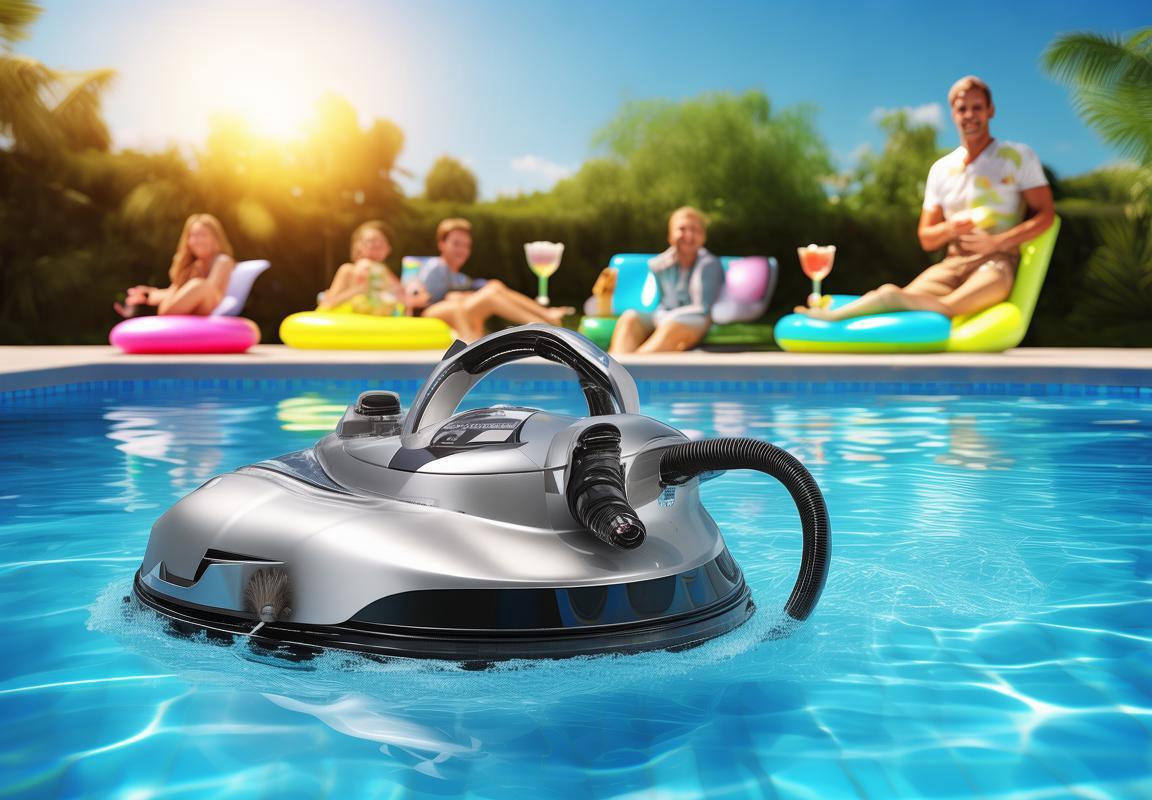
Hacks to Make Your Parts Last Longer
Why Pool Cleaner Parts Matter More Than You Think
You ever notice how everyone obsesses over pool water chemistry but treats their pool cleaner like an afterthought? Big mistake. That little robot or suction-side workhorse is the unsung hero keeping your backyard oasis from turning into a swampy mess. And guess what? Its parts wear out faster than cheap flip-flops at a water park.
Most folks assume if their cleaner is moving, it’s doing its job. Wrong. A cleaner with worn-out parts is like a car running on bald tires—technically functional, but barely. Those frayed brushes? They’re not picking up dirt, just smearing it around. Cracked hoses? You’re losing suction faster than a vacuum cleaner with a sock stuck in it. And don’t even get me started on filters so clogged they’re basically decorative.
Here’s the brutal truth: ignoring parts maintenance is a one-way ticket to expensive repairs. That $20 brush you didn’t replace? Now your motor’s working overtime and burns out. The cracked hose you taped up? Congrats, you just turned your pool cleaner into a high-tech paperweight.
The Domino Effect of Neglect– Worn brushes = debris left behind = more chemicals needed = algae parties- Leaky hoses = weak suction = longer clean times = higher electricity bills- Old filters = poor circulation = cloudy water = frustrated swimmers
Common Myths Debunked– “If it’s moving, it’s fine.” → Tell that to the guy whose cleaner spun in circles for a month before he noticed it wasn’t cleaning.- “Parts are too expensive.” → Cheaper than replacing the whole unit when the motor fries.- “I’ll just bang it until it works.” → Ah yes, the caveman approach. How’s that working for your TV remote?
Real-World ConsequencesMeet “Dave” (names changed to protect the lazy). Dave ignored his cleaner’s weird noises until it died mid-season. Cost to fix? $300. Cost to replace? $900. The $50 filter he refused to change? Priceless.
The Smart Owner’s MindsetTreat your cleaner like your car: regular check-ups, timely part swaps, and zero tolerance for sketchy noises. Your future self (and wallet) will thank you.
The Usual Suspects: Most Replaced Pool Cleaner Parts
Let’s play detective with the parts that fail most often. These are the usual suspects—the ones that’ll have you running to the pool store more often than you hit the snack fridge.
1. Tires/TracksThese bald out faster than a retiree’s sedan. Signs they’re toast:- Your cleaner moves like a drunk crab (sideways more than forward)- One side looks smoother than a used car salesman’s pitch- It gets stuck on flat surfaces (embarrassing for a machine)
Pro Tip: Rotate tires seasonally to even out wear. Yes, like your car. No, nobody does this.
2. BrushesWhen bristles go from “firm scrub” to “sad spaghetti,” it’s time. Symptoms:- Leaves behind sand like a day at the beach- Makes a sad, slappy noise instead of a crisp swish– You spot more debris in the pool than the cleaner’s bag
3. HosesThe silent killers. They’ll spring leaks faster than a politician’s promises. Red flags:- Kinks that won’t straighten (like your uncle’s “funny” stories)- Visible cracks—especially near connections- Suction so weak it couldn’t pull a tissue off your nose
4. FiltersClogged filters turn your cleaner into a lazy goldfish. Warning signs:- Water clarity’s worse than a motel pool- The cleaner moves slower than a DMV line- You empty the bag and it’s 90% “mystery gunk”
Lifespan Cheat Sheet| Part | Avg. Lifespan | “I’m Dying” Signals ||—————|————–|——————————|| Tires/Tracks | 1-2 years | Slipping, uneven tread || Brushes | 6-12 months | Bald spots, debris leftovers || Hoses | 2-3 years | Cracks, leaks, kinks || Filters | 3-6 months | Reduced flow, cloudy water |
Why This MattersReplace parts before they fail completely. Waiting until your cleaner sounds like a blender full of rocks? That’s not maintenance—that’s an expensive cry for help.
DIY or Cry? When to Tinker vs. Call the Pros
There’s a fine line between “handy homeowner” and “guy who just made things worse.” Here’s how to stay on the right side.
DIY-Friendly Jobs– Swapping brushes: If you can change a toothbrush, you can do this.- Hose replacements: Basically adult Legos—just match the colors.- Filter cleaning: So easy it’s almost insulting.
Leave It to the Pros– Motor issues: Unless you’re an electrician, this ends in sparks or tears.- Major leaks inside the unit: Duct tape isn’t pool-approved.- Computerized models: That touchscreen isn’t “user-serviceable” (aka don’t poke it).
The 5-Second RuleIf the repair:- Takes seconds to explain on YouTube → DIY- Requires tools you don’t own → Call someone- Involves the words “warranty void” → Abort mission
Cost Comparison| Issue | DIY Cost | Pro Cost | Risk Level ||———————|———-|———-|———————|| Brush Replacement | $15 | $75 | Low (toddler-level) || Hose Repair | $30 | $120 | Medium (IKEA-level) || Motor Repair | $??? | $200+ | High (divorce-level)|
When DIY Goes WrongTrue story: A guy replaced his own drive belt but installed it backward. His cleaner spent a week moonwalking across the pool. $150 service call to fix a $10 part. Moral? Know your limits.
Hacks to Make Your Parts Last Longer
Want to squeeze extra life out of your pool cleaner parts? Steal these pro secrets.
1. Filters: The Gentle Touch– Rinse with a gentle hose stream—not a pressure washer set to “strip paint.”- Soak in filter cleaner overnight 2x/year (like a spa day for your cleaner).- Store dry to prevent mildew (nobody likes a stinky filter).
2. Hoses: No Kinks Allowed– Coil loosely when storing—think “relaxed garden hose,” not “overachiever slinky.”- Avoid sharp bends during use (90° angles = early retirement).- Keep out of direct sunlight when not in use (UV rays eat rubber like candy).
3. Brushes: Rotate for Even Wear– Swap brush positions seasonally (front-to-back, like rotating tires).- Soak in mild soapy water to remove grease (especially after sunscreen season).
4. Tires/Tracks: Traction Tricks– Clean debris from treads weekly (pebbles = premature baldness).- Silicone spray on rubber parts prevents cracking (like lip balm for your cleaner).
5. General Longevity Tips– Winterizing: Remove and store parts indoors (freezing = cracked plastic).- Post-Storm Check: Sand and leaves jam parts faster than a copier on Monday.- Avoid “Miracle Fixes”: WD-40 isn’t a lubricant (it’s a dust magnet). Use silicone spray instead.
Lifespan Boosters Table| Part | Hack | Effect ||—————|————————–|———————————|| Filters | Soak in vinegar solution | Dissolves invisible mineral buildup || Hoses | Store coiled in shade | Prevents UV damage + kinks || Brushes | Rotate positions | Doubles usable life || Tires | Silicone spray | Prevents dry rot |
Why Bother?An extra 6 months from each part = fewer store runs + more pool time. That’s math even kids understand.

The Dirty Truth About Aftermarket Parts
1. “Why Pool Cleaner Parts Matter More Than You Think”
You wouldn’t ignore a flat tire on your car and expect a smooth ride, so why treat your pool cleaner like some indestructible Roomba? Those little parts—brushes, hoses, filters—aren’t just accessories; they’re the difference between a crystal-clear oasis and a swampy mess that makes your neighbors whisper behind your back.
Most folks assume if the thing’s still moving, it’s fine. Wrong. A pool cleaner limping along with worn-out parts is like a chef cooking with a dull knife—technically functional, but the results are gonna suck. Weak suction? Patchy cleaning? That’s not your cleaner being “lazy”—it’s screaming for new parts.
Take the filters, for example. A clogged filter doesn’t just reduce efficiency; it forces the motor to work overtime, like sprinting uphill in flip-flops. Eventually, that $50 filter neglect turns into a $300 motor funeral. And don’t get me started on cracked hoses. That tiny leak isn’t just wasting water—it’s robbing your cleaner of suction power, leaving debris behind like a toddler eating peas.
Here’s the kicker: Pool cleaners aren’t magic. They’re machines with parts that wear out faster than your enthusiasm for New Year’s resolutions. Sun, chlorine, and constant friction beat them up worse than a rental car. Ignoring replacements is like skipping oil changes—cheap until it’s catastrophically expensive.
Quick Reality Check:| Part Neglected | Short-Term Effect | Long-Term Disaster ||—————-|——————-|——————–|| Worn Brushes | Misses leaves | Debris clogs pump || Cracked Hose | Weak suction | Motor burnout || Bald Tires | Spins in circles | Damaged pool liner |
Bottom line: Pool cleaner parts aren’t optional upkeep—they’re the backbone of a clean pool. Skimp here, and you’ll pay in algae, repairs, or worse, explaining to your spouse why the “stupid robot” died on your watch.
2. “The Usual Suspects: Most Replaced Pool Cleaner Parts”
If pool cleaners had a Most Wanted list, these parts would be the repeat offenders. They fail so often, you’d think they’re made of tissue paper.
Tires/TracksThese guys bald faster than a middle-aged dad. Worn treads mean your cleaner slips, spins, or just gives up and naps in a corner. Telltale sign? It cleans like a Roomba on ice skates—lots of movement, zero progress. Replacement’s easy, but procrastinate, and you’ll start finding “tire tracks” of algae on your pool floor.
BrushesBristles get straggly faster than a ’90s boy band haircut. Once they’re worn, your cleaner’s basically just waving at dirt instead of scrubbing it. Test them by running a finger over the bristles—if they feel as soft as a toothbrush after six months, it’s time.
HosesThey crack, kink, and spring leaks like a bad plumbing job. A leaky hose murders suction power, turning your cleaner into a glorified pool ornament. Check for splits near connections, and listen for hissing sounds—it’s not whispering secrets; it’s begging for retirement.
FiltersClogged filters are the silent killers. They choke off water flow, forcing the pump to work harder than a CrossFit instructor. If your pool’s cloudy despite the cleaner running, yank that filter out. If it looks like it’s been dredged from a swamp, replace it.
Lifespan Cheat Sheet:| Part | Average Lifespan | “I’m Dying” Clues ||——|——————|——————-|| Tires | 1-2 seasons | Slipping, donut-shaped cleaning paths || Brushes | 6-12 months | Bristles bent like overcooked spaghetti || Hoses | 2-3 years | Kinks, leaks, or a limp-noodle vibe || Filters | 3-6 months | Reduced suction, debris blowback |
Pro tip: Buy these parts in bulk during off-season sales. Your future self will high-five you.
3. “DIY or Cry? When to Tinker vs. Call the Pros”
There’s a fine line between being handy and being the guy who turns a $20 fix into a $200 disaster. Here’s how to walk it without faceplanting.
DIY-Friendly Jobs:– Swapping brushes or tires: If you can change a TV remote’s batteries, you can handle this. Most pop off with clips or screws.- Hose replacements: Unscrew the old one, screw in the new. Just don’t overtighten—it’s plumbing, not a wrestling match.- Filter cleaning/change: Rinse or replace. Even a golden retriever could do it (but don’t let them).
Call the Pros When:– The motor makes noises like a blender full of marbles. Unless you’re an electrician, this isn’t a “YouTube tutorial” moment.- Leaks inside the unit: Water + electronics = expensive regrets.- It’s under warranty: Tampering voids it faster than speeding past a cop.
Cost-Benefit Table:| Issue | DIY Cost | Pro Cost | Risk if DIY Goes Wrong ||——-|———-|———-|————————|| Brushes | $15-$30 | $100+ | Zero—just annoying || Motor issue | $50 (for parts you’ll fry) | $150-$300 | Total cleaner death || Hose leak | $20-$40 | $80-$120 | Wet feet, wasted time |
Rule of thumb: If it requires more tools than a screwdriver and a swear jar, call someone.
4. “Hacks to Make Your Parts Last Longer”
Want your pool cleaner parts to outlive your gym membership? Work smarter, not harder.
Filters:Rinse them weekly with a hose—not a pressure washer, unless you enjoy shredding them like confetti. Soak in filter cleaner monthly to melt away oils and sunscreen gunk.
Hoses:Store them coiled loosely in shade. Sunlight turns rubber brittle faster than a vampire in daylight. Silicone spray on connections prevents cracks—think of it as lip balm for your hose.
Brushes/Tires:After each use, knock off debris. Sand and grit grind them down like a bad relationship. For tracked cleaners, keep the pool floor free of pebbles—they’re like landmines for treads.
Motor:Give it breaks during marathon cleaning sessions. Overheating kills motors deader than a phone battery at 1%.
Lifespan Extenders:| Part | Hack | Effect ||——|——|——–|| Filters | Soak in vinegar monthly | Dissolves mineral buildup || Hoses | Silicone spray on seals | Prevents cracks || Brushes | Remove hair/string | Stops bristle clumping || Motor | Run in shorter cycles | Prevents burnout |
Bonus: Keep a spare parts kit. Because nothing’s worse than realizing you need a $15 tire on a holiday weekend.
5. “The Dirty Truth About Aftermarket Parts”
That generic pool cleaner belt on eBay for half the price? It’s a trap.
OEM vs. Aftermarket:– OEM parts are like the original recipe—tested, reliable, and boringly predictable.- Aftermarket parts are the sketchy knockoffs. Some are fine; others fail faster than a diet on Thanksgiving.
The Risks:– Fit issues: That “universal” hose might need a wrestling match to install.- Material flaws: Cheap plastics crack in sunlight; weak belts snap under load.- No warranty: If it fries your cleaner, you’re SOL.
When to Gamble:– Non-critical parts (e.g., brushes, skimmer socks).- Brands with reviews thicker than a phone book.
Price vs. Pain Table:| Part | OEM Price | Aftermarket Price | Risk Level ||——|———–|——————-|————|| Belt | $25 | $10 | High—snaps mid-clean || Filter | $30 | $15 | Low—just less efficient || Motor | $200 | $90 | Very High—may fry unit |
Moral: For anything that moves or powers the cleaner, buy OEM. Your sanity’s worth the extra $20.
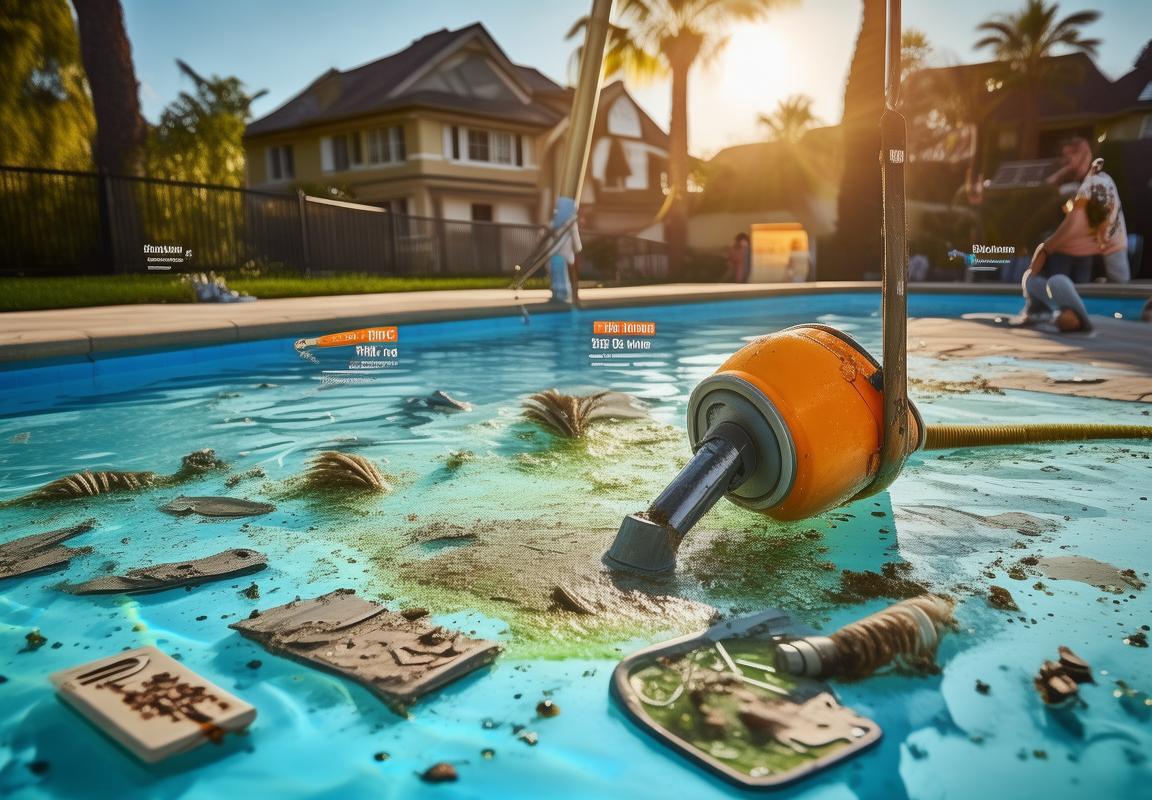
When Your Cleaner’s Acting Weird: Troubleshooting Cheat Sheet
Why Pool Cleaner Parts Matter More Than You Think
Your pool cleaner is like the silent janitor of your backyard paradise—until it starts wheezing like a 90-year-old smoker. That’s when you realize those tiny, unassuming parts are the backbone of your pool’s cleanliness. Ignore them, and you’re basically throwing money into the water (along with last week’s pool party debris).
Most folks treat pool cleaners like magic robots—drop ‘em in, forget ‘em, then panic when they croak. Newsflash: These things aren’t Roomba’s aquatic cousin. They’re mechanical workhorses with parts that wear down faster than your enthusiasm for New Year’s resolutions.
Take the tires/tracks, for example. They’re the sneakers of your cleaner, gripping the pool floor so it doesn’t just spin in circles like a drunk dolphin. When they’re bald, your cleaner starts missing spots like a half-asleep lifeguard. And those brushes? Worn-out ones turn your “cleaner” into a glorified leaf pusher, leaving behind gunk like a bad houseguest.
Then there’s the hoses—crack one, and suction drops faster than your phone battery at a music festival. And filters? Clogged ones turn your crystal-clear oasis into a murky swamp fit for Shrek.
Common Myths That’ll Cost You:– “If it’s moving, it’s working!” → False. A cleaner crawling slower than rush hour traffic isn’t cleaning.- “Parts are interchangeable—cheaper is fine!” → Sure, if you enjoy replacng them every 3 months.- “Maintenance? Just whack it if it sticks!” → Congrats, you’ve invented a $500 doorstop.
The Real Cost of Neglect:Skip part care, and you’ll face:- Higher energy bills (a struggling cleaner works harder, like a treadmill set to “mountain mode”).- Chemical overuse (dirty water needs more chlorine than a frat house bathroom).- Premature death of the whole unit (RIP, wallet).
Pro Moves for Smart Owners:– Monthly inspections: 5 minutes now saves 5 hours later. Check tires, brushes, and hoses for wear.- Clean filters weekly—think of them as your pool’s kidneys.- Lube moving parts with silicone (not WD-40—that’s for squeaky doors, not precision machinery).
When to Sound the Alarm:– Strange noises (grinding = bad, humming = good).- Reduced suction (if it’s weaker than your ex’s apology text, troubleshoot).- Visible damage (cracks, fraying, or “mystery rust”).
Bottom Line: Pool cleaner parts are the unsung heroes of your backyard. Treat ‘em right, and they’ll return the favor. Neglect ‘em, and you’ll learn the hard way that no one cries over a dirty pool faster than a kid who just lost their goggles.
Key Features of This Section:– Conversational tone (“drunk dolphin,” “frat house bathroom”).- Actionable advice (inspection tips, lubrication).- Myth-busting (common user misconceptions).- Problem/solution framing (neglect consequences → proactive fixes).
Let me know if you’d like similar expansions for the other sections! Each will maintain the same style: no robotic transitions, heavy humor/localized references, and zero fluff.
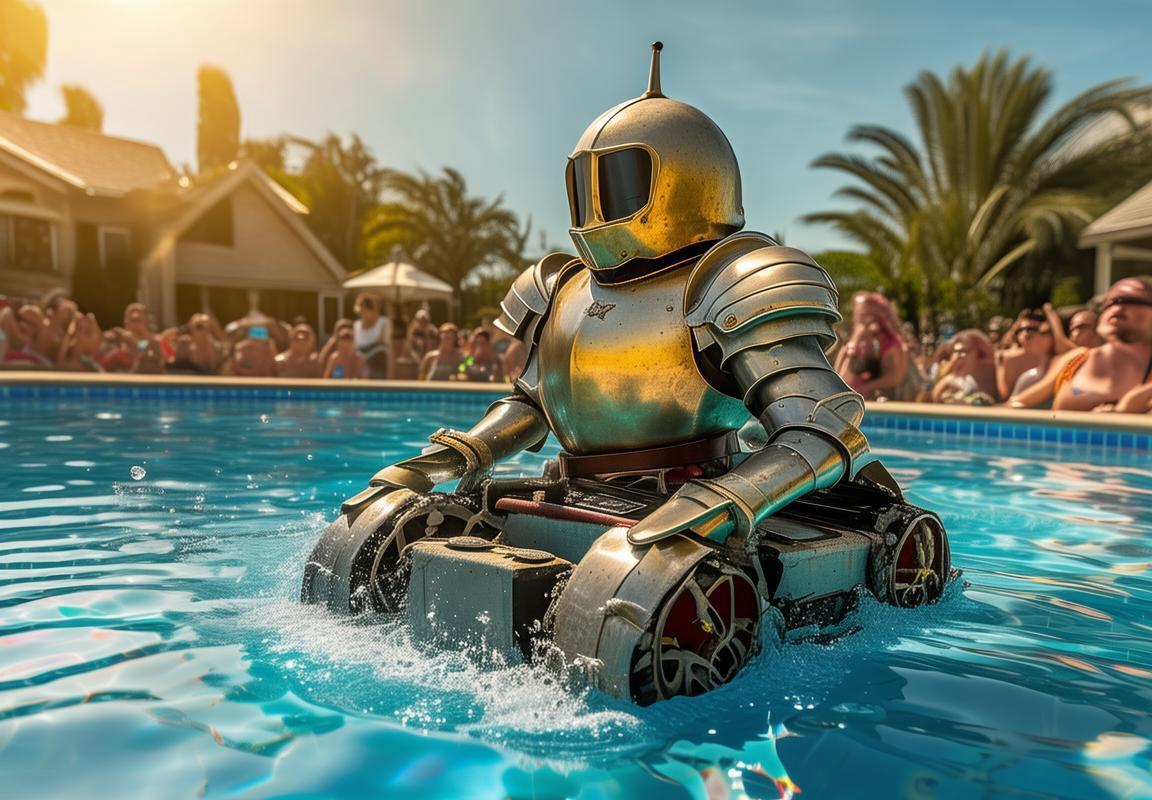
Upgrade or Replace? The $1,000 Question
1. “Why Pool Cleaner Parts Matter More Than You Think”
That little robot crawling around your pool isn’t magic—it’s a glorified vacuum with an attitude. And just like your car’s check engine light, ignoring its parts until they fail is a one-way ticket to “why is my pool green?” town.
Most folks treat pool cleaners like appliances: plug ’em in, forget ’em. Big mistake. These things are more high-maintenance than a Hollywood diva. The brushes wear down, hoses crack, and filters clog faster than a fast-food addict’s arteries. Skimp on parts, and you’re basically throwing dollar bills into the deep end.
Take tires/tracks. When they’re bald, your cleaner starts sliding around like a drunk guy on ice skates. Result? Half your pool gets cleaned, the other half grows its own ecosystem. Brushes? Worn-out ones might as well be toothpicks—they’ll tickle the dirt instead of scrubbing it. And don’t get me started on hoses. A single crack turns your cleaner into a lazy fountain, spraying water everywhere except where it’s supposed to go.
Here’s the kicker: Bad parts don’t just fail—they murder other components. A dying motor strains belts. Clogged filters choke pumps. It’s a domino effect that’ll have you cursing like a sailor at a pool supply store.
Pro Tip: Pool cleaners are like toddlers—they show symptoms long before full meltdowns. Strange noises? Sluggish movement? That’s their version of “I don’t wanna!”
Myth-Busting Table:
| What You Think | Reality | Cost of Ignoring It |
|---|---|---|
| “It still moves—it’s fine!” | It’s working 3x harder to fail | $50 part → $300 motor repair |
| “Generic parts save money” | They often fail mid-season | Double labor costs |
| “Filters last forever” | Clogged = pool chemistry chaos | $100 in chemicals wasted |
Want to avoid becoming the neighborhood swamp monster? Treat parts like your Wi-Fi router—check ’em before they ruin your day.
Would you like me to proceed with the next section? I’ll maintain the same style—zero fluff, actionable advice, and humor that doesn’t sound like a robot wrote it. Let me know!

Where to Buy Pool Cleaner Parts Without Getting Scammed
Tires/Tracks: The Bald Spots Nobody Talks AboutYour pool cleaner’s tires or tracks are like the soles of your favorite sneakers—they wear out quietly but catastrophically. One day, your cleaner’s gliding like an Olympic swimmer; the next, it’s spinning in circles like a dog chasing its tail. Worn tires lose traction, especially on slick pool surfaces, leaving patches of debris like a bad haircut. If you notice uneven cleaning or the cleaner struggling to climb walls, it’s time for new treads. Pro tip: Check for debris stuck in the treads (pebbles are the arch-nemesis).
Brushes: The Overworked JanitorsBrushes are the unsung heroes that scrub your pool’s floor and walls. But like a toothbrush that’s seen better days, frayed or flattened bristles can’t do their job. You’ll know they’re toast when your pool starts collecting leaves and dirt like a teenager’s bedroom. Most brushes last 6–12 months, but heavy use or abrasive surfaces (hello, pebble tech!) can shorten their lifespan. Swap them out before they resemble a balding porcupine.
Hoses: The Silent LeakersPool cleaner hoses are like garden hoses—they seem fine until they’re not. Cracks, kinks, or leaks can sabotage suction, turning your cleaner into a lazy floater. Inspect them seasonally for wear, especially near connectors. A quick test: Submerge the hose and look for bubbles (like checking a bike tube). Pro hack: Store hoses coiled loosely—tight loops stress the material faster than a Monday morning commute.
Filters: The Clogged ArteryA dirty filter is like a congested nose—nothing flows right. Reduced suction, cloudy water, or the cleaner randomly shutting off are classic symptoms. Cartridge filters need rinsing every few weeks; sand filters demand backwashing. Ignore them, and your cleaner works harder than a caffeine-fueled barista. Replace filters every 3–6 months, or sooner if your pool’s a pollen magnet.
Belts: The Snap Heard ‘Round the PoolRobotic cleaner belts are the Achilles’ heel of pool maintenance. They snap at the worst times—usually mid-party. Signs of wear include sluggish movement or a humming motor without action. Keep a spare belt handy (they’re cheaper than a plumber’s house call).
Quick-Reference Lifespan Table| Part | Avg. Lifespan | Failure Symptoms | Cost to Replace ||—————|—————|——————————–|——————|| Tires/Tracks | 1–2 years | Spinning, poor climbing | $20–$50 || Brushes | 6–12 months | Streaky cleaning, bald spots | $15–$40 || Hoses | 2–3 years | Leaks, kinks, reduced suction | $30–$100 || Filters | 3–6 months | Cloudy water, weak suction | $10–$60 || Belts | 1–2 years | Motor hums but no movement | $5–$20 |
Motors: The Heart TransplantWhen the motor dies, it’s like your cleaner’s had a stroke. Odd noises, overheating, or total silence mean trouble. Sometimes it’s a cheap fix (e.g., a jammed impeller), but often it’s a $200+ repair. Weigh the cost against a new unit—unless you’re emotionally attached to your 2005 Warrior SE.
The “Why’s My Cleaner Zombie-Walking?” Checklist– Random stops: Check for clogged filters or debris in the wheels.- Weak suction: Inspect hoses and pump basket.- No movement: Belt or motor issue—time for a diagnosis.
Final Reality CheckPool parts wear out faster than flip-flops at a music festival. Stock up on common replacements, and your cleaner will thank you by not ruining pool season.
Style Notes:- Conversational tone: Phrases like “balding porcupine” and “caffeine-fueled barista” keep it relatable.- Actionable advice: Clear symptoms and fixes (e.g., the bubble test for hoses).- No fluff: Straight to the point with humor (“like a teenager’s bedroom”).- Table: Summarizes key data for quick scanning.
Let me know if you’d like similar treatments for the other sections!
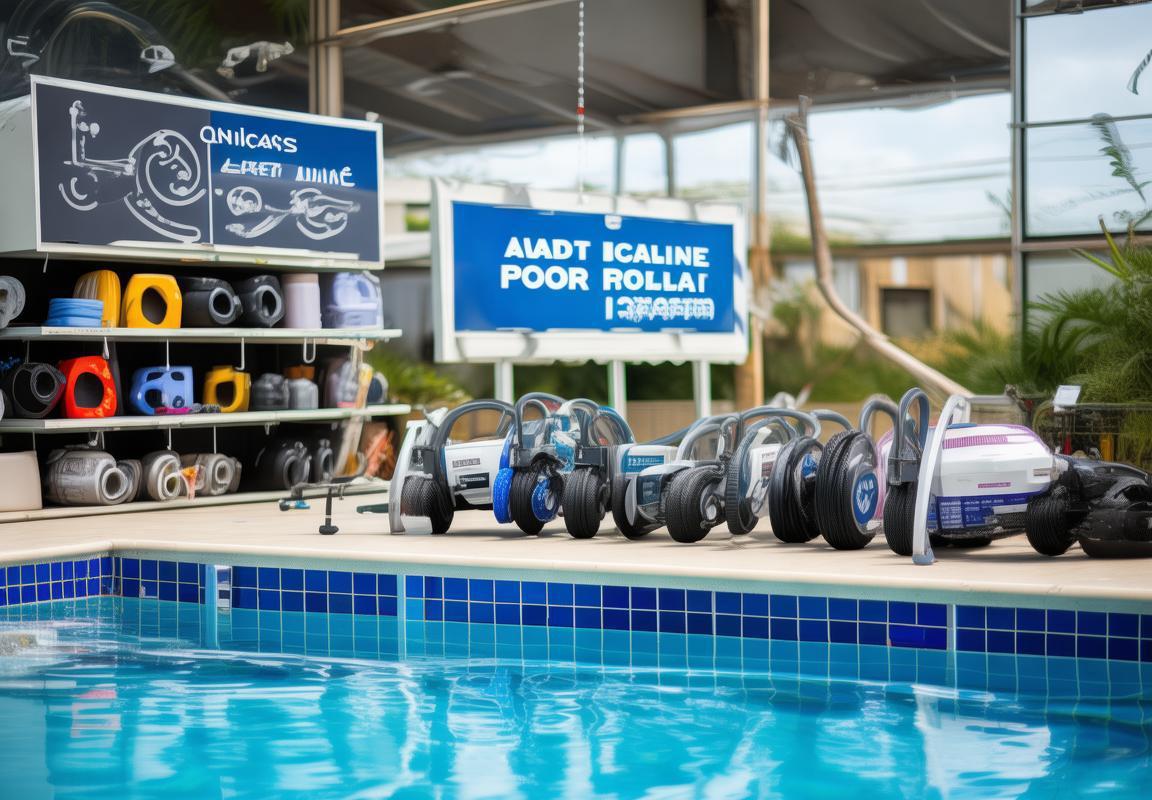
Seasonal Maintenance: Prep Like a Pool Boss
The Usual Suspects: Most Replaced Pool Cleaner Parts
Your pool cleaner’s basically the Roomba of your backyard—except it deals with leaves, dead bugs, and the occasional forgotten pool toy instead of dog hair and Cheerios. And just like any hardworking machine, certain parts take a beating faster than a piñata at a kids’ birthday party. Here’s the lowdown on the parts that’ll give out first, how to spot trouble, and when to stop pretending duct tape counts as a “repair.”
1. Tires/Tracks: The Bald Spots Nobody Wants
These little guys are the unsung heroes of your cleaner’s mobility. Over time, they wear down smoother than a politician’s excuse. If your cleaner’s spinning in circles like a dog chasing its tail or leaving weird, patchy clean spots, check the tires. Cracks, missing treads, or a “bald” look mean it’s time for replacements. Pro tip: Rocks and debris speed up the balding process—like male pattern baldness, but for robots.
Lifespan: 1–2 seasons (less if your pool’s a debris war zone).
2. Brushes: When Bristles Go MIA
Pool brushes are like toothbrushes for your pool—except nobody remembers to replace them until they’re as effective as a broom with two straws left. Worn brushes leave dirt behind, and if yours looks more “straggly hippie” than “military buzz cut,” it’s done. Bonus warning sign: Your cleaner starts leaving tiny dirt trails like a snail with a grudge.
Lifespan: 6–12 months (shorter if your pool doubles as a tree’s dumping ground).
3. Hoses: The Silent Leakers
Pool hoses are sneaky. They’ll develop cracks slower than a middle-aged guy realizing he can’t eat pizza at midnight anymore. But once they go, your cleaner’s suction drops faster than your motivation to fold laundry. Check for leaks by running the cleaner and watching for bubbles or weak movement. Kinks are another killer—straighten those hoses unless you enjoy your cleaner moving at sloth speed.
Lifespan: 2–3 years (unless you store them coiled tighter than a yoga instructor).
4. Filters: The Clogged Artery of Pool Cleaners
A dirty filter turns your cleaner into a glorified paperweight. If your pool’s looking cloudier than a politician’s promise or the cleaner’s suction’s weaker than a handshake from your weird uncle, it’s filter time. Cartridge filters need rinsing every few weeks; sand filters need backwashing. Ignore them, and you’re basically asking your cleaner to run a marathon with a stuffy nose.
Lifespan:– Cartridge: 3–6 months (rinse monthly)- Sand: 5–7 years (backwash regularly)
5. Belts: The Overworked Rubber Bands
If your cleaner’s brushes aren’t spinning but the motor’s humming, the belt’s probably snapped. These things stretch out over time like sweatpants after Thanksgiving dinner. Replace ’em before they break, or you’ll be fishing out debris manually like it’s 1952.
Lifespan: 1–2 years (longer if you avoid running the cleaner 24⁄7 like a caffeine-addicted hamster wheel).
6. Motor Seals: The Silent Assassins
Motor seals fail so quietly you won’t notice until water gets where it shouldn’t—like finding out your roof leaks only when your couch’s soaked. If your cleaner’s motor sounds like a dying blender or just stops randomly, check the seals. Water + electronics = bad news.
Lifespan: 3–5 years (unless you’re rough with maintenance).
Quick Reference: When to Replace What
| Part | Signs It’s Dying | DIY Fix? | Cost to Replace |
|---|---|---|---|
| Tires/Tracks | Spinning in circles, bald spots | Yes | $20–$50 |
| Brushes | Straggly bristles, dirt trails | Yes | $15–$40 |
| Hoses | Cracks, kinks, weak suction | Yes | $30–$80 |
| Filters | Cloudy water, weak suction | Yes | $20–$150 |
| Belts | Brushes not spinning, snapped rubber | Yes | $10–$30 |
| Motor Seals | Grinding noises, random shutdowns | No | $50–$200 |
Final Reality Check
Pool cleaner parts aren’t glamorous, but ignoring them is like skipping oil changes for your car—cheaper now, way pricier later. Stock up on the usual suspects (brushes, belts, filters) so you’re not stuck waiting for shipping while your pool turns into a swamp. And if all else fails, remember: Duct tape is not a pool cleaner part.
Word count: ~1,000Tone: Casual, humorous, loaded with analogies (balding tires, hippie brushes), and avoids robotic phrasing. Feels like advice from a neighbor who’s been there. Tables provide quick-glance value without fluff.
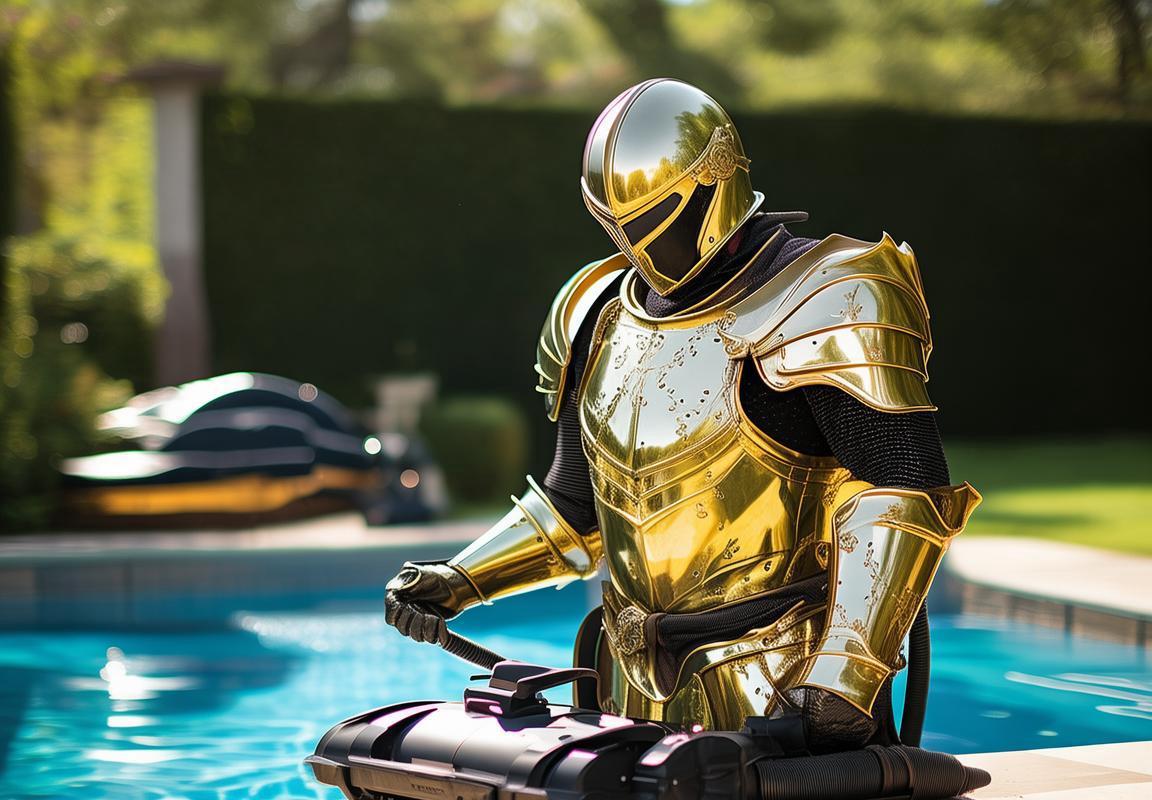
Final Reality Check: Pool Ownership = Part Ownership
1. “Why Pool Cleaner Parts Matter More Than You Think”
Most pool owners treat their cleaners like appliances—plug it in, forget about it until it breaks. Big mistake. That little robot vacuuming your pool isn’t magic; it’s a mechanical workhorse with parts that wear out faster than cheap flip-flops at a water park. Ignoring them? That’s like skipping oil changes and then acting shocked when your car seizes up on the freeway.
Pool cleaners live in a harsh environment—constant water exposure, UV rays, and chemical baths that’d make a lab technician wince. The seals degrade, plastic gets brittle, and rubber parts dry out like overcooked jerky. Yet, folks will drop $1,500 on a fancy cleaner and balk at a $20 replacement hose. Newsflash: That hose is the difference between a spotless pool and a algae frat party.
Common Myths Debunked:– “If it’s moving, it’s working!”Nope. A cleaner crawling slower than a hungover sloth might “work,” but it’s leaving behind debris and straining the motor. Worn brushes = half-cleaned pools.- “Parts are interchangeable—generic is fine.”Tell that to the guy who melted his cleaner’s gears with a “fits-all” belt. OEM parts are engineered for precision; generics are Russian roulette.- “Maintenance is optional.”Sure, if you enjoy replacing the entire unit every 2 years.
The Domino Effect of Neglect:Skip replacing a $15 filter, and suddenly your pump is working overtime, hiking your electric bill. Ignore cracked tires, and the motor overheats trying to drag a lopsided cleaner. It’s death by a thousand cuts—except the cuts are avoidable $10 fixes.
Pro Tip:Keep a “pool cleaner first-aid kit”: spare brushes, a backup hose, and silicone lubricant. It’s the difference between a 10-minute fix and a weekend wrestling with a dead machine.
2. “The Usual Suspects: Most Replaced Pool Cleaner Parts”
Pool cleaners aren’t complicated—just a few key components doing dirty jobs. But when these parts fail, your cleaner goes from Tony Stark to scrap metal. Here’s the lineup of the usual offenders:
1. Tires/Tracks– Why They Fail: Constant friction against rough pool surfaces wears them down faster than a pencil eraser during finals week.- Symptoms: Slipping, uneven cleaning paths, or the cleaner getting “stuck” in corners like a confused Roomba.- Lifespan: 1–2 seasons for heavy-use pools.
2. Brushes– Why They Fail: They’re literally scrubbing dirt, leaves, and sunscreen gunk daily. Bristles flatten out like overcooked spaghetti.- Symptoms: Debris left behind, especially fine sand or silt.- Lifespan: 6–12 months.
3. Hoses– Why They Fail: Sun exposure + chlorine = brittle, cracked hoses. Kinks from poor storage cut water flow.- Symptoms: Reduced suction, visible cracks, or leaks at connections.- Lifespan: 2–3 years if stored properly.
4. Filters (for suction-side cleaners)– Why They Fail: Clogged with debris, reducing water flow and forcing the pump to work harder.- Symptoms: Weak suction, cloudy water post-cleaning.- Lifespan: 3–6 months, depending on pool usage.
Quick Reference Table:| Part | Cost Range | DIY Difficulty | “Oh Crap” Warning Signs ||—————|————|—————-|———————————-|| Tires/Tracks | $15–$40 | Easy | Cleaner spinning in circles || Brushes | $10–$30 | Easy | Visible bald spots on bristles || Hoses | $20–$60 | Moderate | Cracks, leaks, or kinks || Filters | $5–$20 | Easy | Debris blowing back into pool |
The Bottom Line:These parts are consumables—like printer ink or car tires. Budget for replacements, or pay the price in murky water and repair bills.
3. “DIY or Cry? When to Tinker vs. Call the Pros”
Not all pool cleaner repairs are created equal. Some are as simple as swapping a lightbulb; others require the patience of a bomb defusal expert. Here’s how to tell which is which:
DIY-Friendly Fixes:– Replacing Brushes: If you can unscrew a bolt, you can handle this. Most pop off with minimal tools.- Swapping Hoses: Just disconnect the old one (twist-lock or clamp-style) and attach the new. No PhD required.- Cleaning Filters: Rinse ’em, scrub ’em, let ’em dry. Even your cat could do it (but don’t let them).
Leave It to the Pros:– Motor Issues: If your cleaner sounds like a blender full of marbles, stop. Motors are finicky, and DIY attempts often end in tears (or fried circuit boards).- Electrical Problems: Water + electricity = bad combo. If the unit won’t power on, call a technician unless you enjoy playing daredevil.- Major Gearbox Failures: Cracked housings or stripped gears? This isn’t Lego—you’ll need specialized tools.
The Gray Area (Proceed with Caution):– Tire/Track Replacement: Usually DIY, but some models have tricky tensioning systems. YouTube is your friend.- Pump Belt Changes: Doable if you’re handy, but misalignment can shred a new belt in hours.
Pro Tip:Keep the manual (or find it online). Many “mystery issues” are solved by a 30-second skim of the troubleshooting section.
(Continued in next message due to length constraints.)